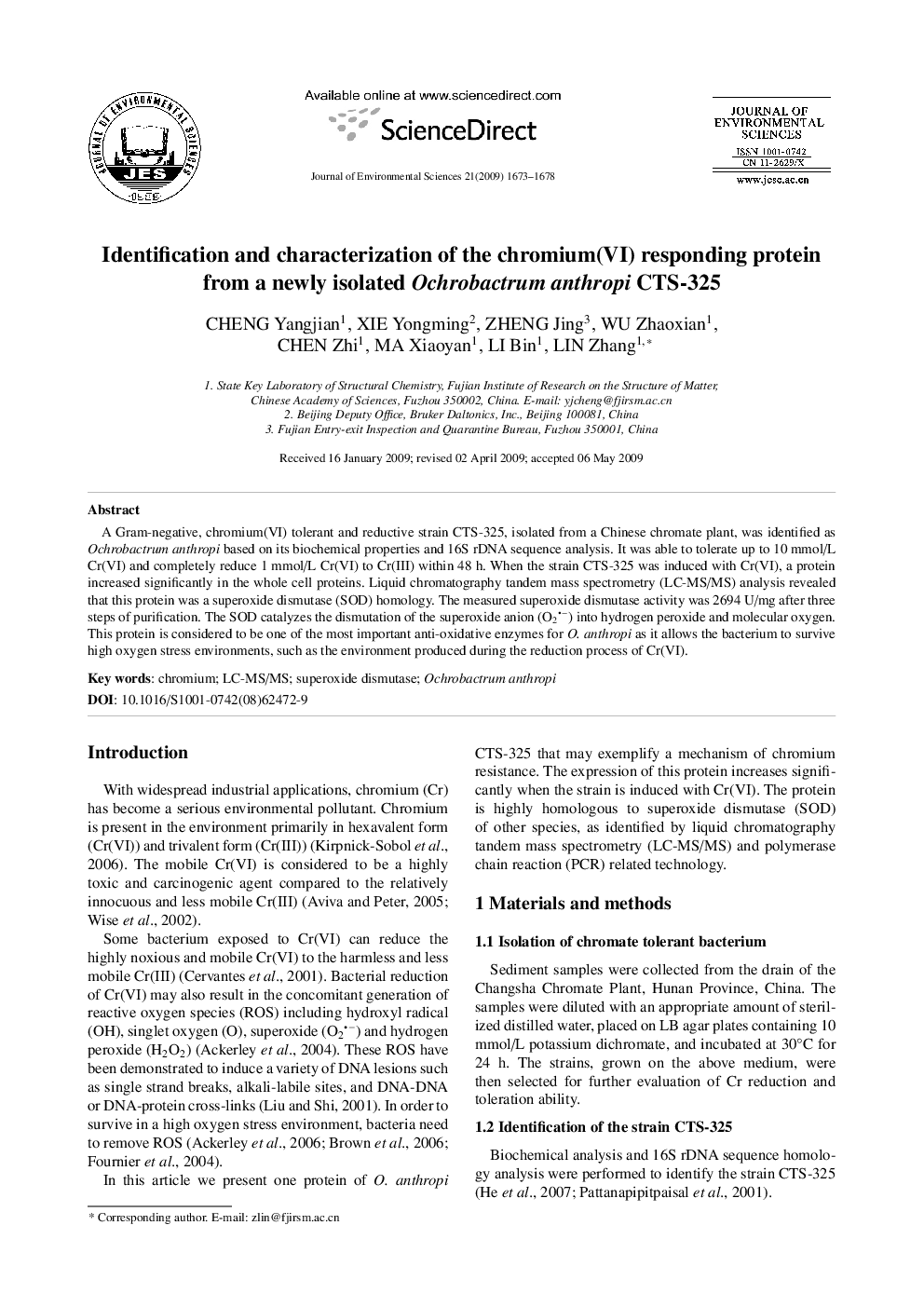| Article ID | Journal | Published Year | Pages | File Type |
|---|---|---|---|---|
| 4455362 | Journal of Environmental Sciences | 2009 | 6 Pages |
A Gram-negative, chromium(VI) tolerant and reductive strain CTS-325, isolated from a Chinese chromate plant, was identified as Ochrobactrum anthropi based on its biochemical properties and 16S rDNA sequence analysis. It was able to tolerate up to 10 mmol/L Cr(VI) and completely reduce 1 mmol/L Cr(VI) to Cr(III) within 48 h. When the strain CTS-325 was induced with Cr(VI), a protein increased significantly in the whole cell proteins. Liquid chromatography tandem mass spectrometry (LC-MS/MS) analysis revealed that this protein was a superoxide dismutase (SOD) homology. The measured superoxide dismutase activity was 2694 U/mg after three steps of purification. The SOD catalyzes the dismutation of the superoxide anion (O2·−) into hydrogen peroxide and molecular oxygen. This protein is considered to be one of the most important anti-oxidative enzymes for O. anthropi as it allows the bacterium to survive high oxygen stress environments, such as the environment produced during the reduction process of Cr(VI).
